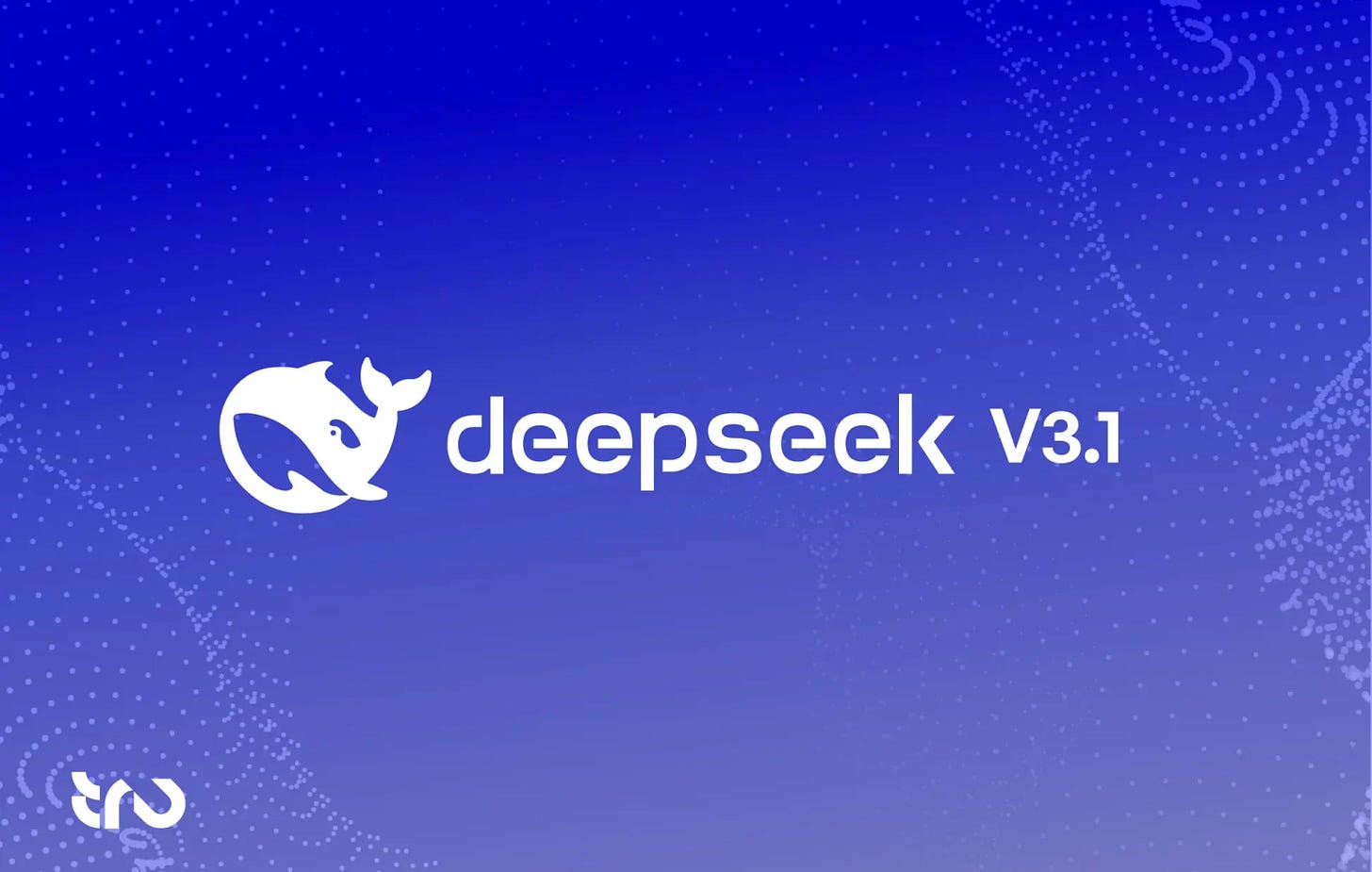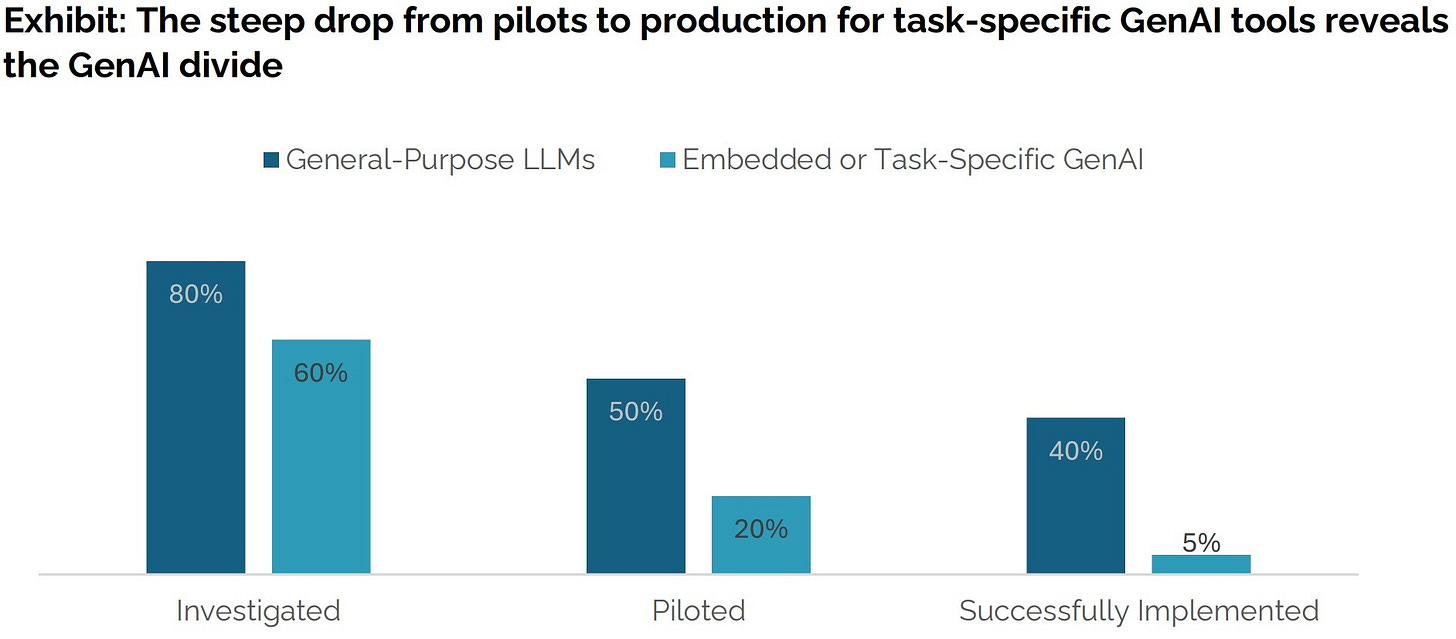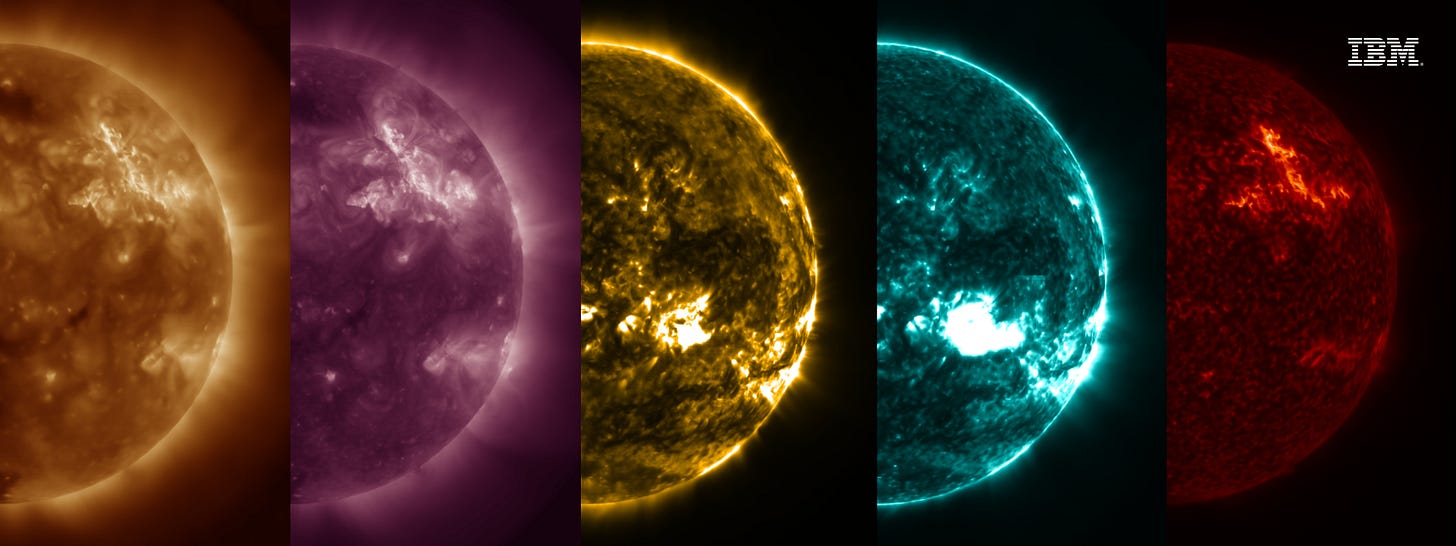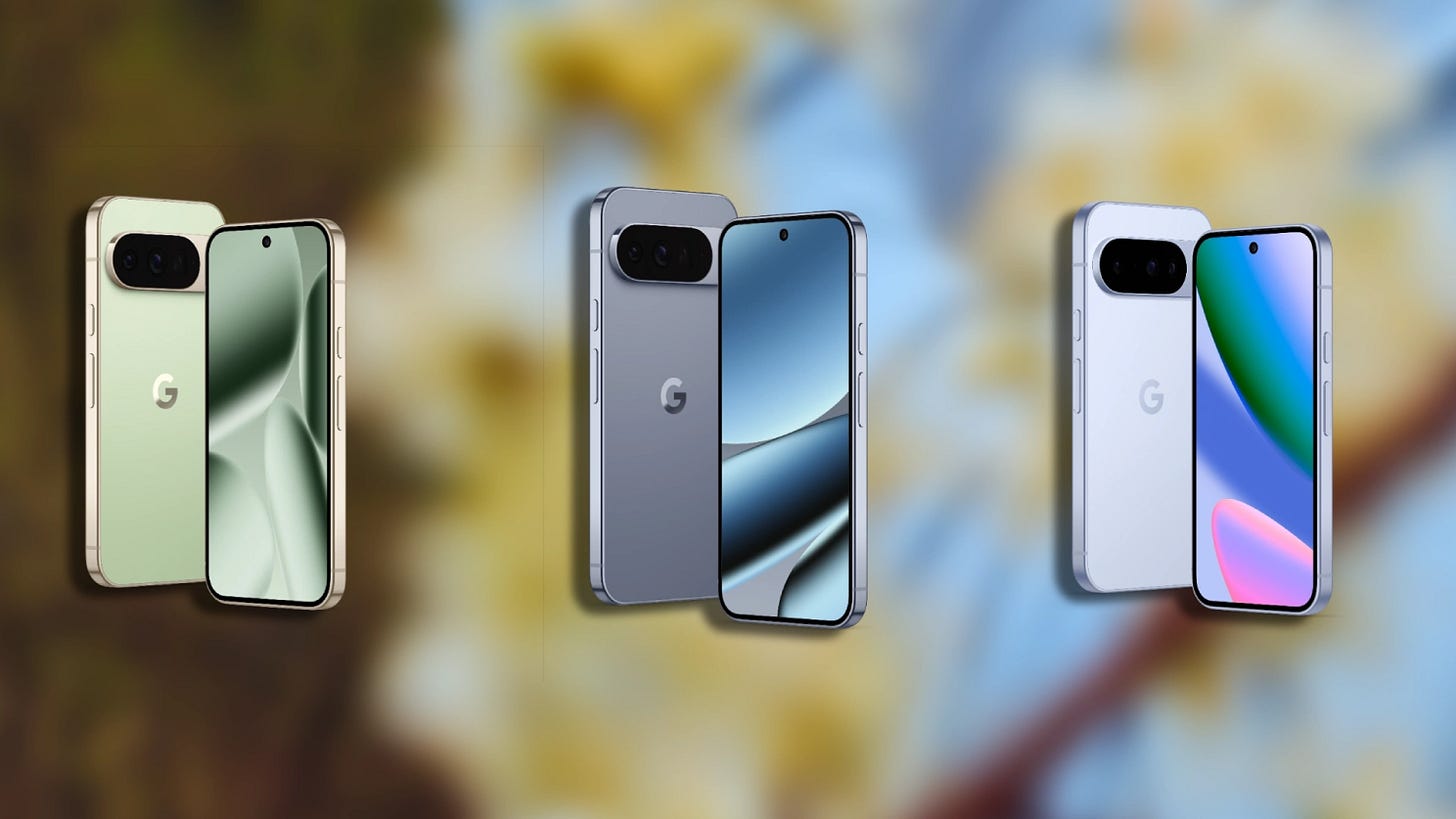DeepSeek V3.1: 90% of GPT-5 Performance, 1% of the Price
After months of delays and missed launch windows, DeepSeek just pulled a surprise move.
Good morning AI entrepreneurs & enthusiasts,
After months of delays, hardware instability with Huawei chips, and multiple missed R2 launch windows, DeepSeek has returned with a different kind of statement: V3.1.
While not carrying the anticipated "R2" title, V3.1 delivers serious firepower: a 128k token context window, hybrid reasoning modes, multilingual strength across 100+ languages, and a 43% boost in multi-step task accuracy. It even outperforms Claude Opus 4.1 on programming benchmarks and delivers 85–90% of GPT-5’s capabilities—at less than 1% of the cost. Let's dive in...
In today’s AI news:
DeepSeek Is Back - V3.1 Out Today
MIT: The Harsh Truth of Enterprise AI Deployments
NASA & IBM launch solar AI model: Surya
Pixel 10 lineup flexes serious AI muscle
Top Tools & Quick News
DeepSeek Is Back - V3.1 Out Today
News: DeepSeek just released version 3.1 of its open-source LLM with massive upgrades across context window, reasoning, multilingual capabilities, and compute efficiency.
The Details:
Now supports 128,000 tokens, enabling analysis of entire codebases or research papers without loss of context. Full demo available here.
43% increase in multi-step accuracy, especially in math, science, and agentic task workflows; supports hybrid "thinking" and "non-thinking" modes.
Supports over 100 languages with improved performance in Asian/low-resource languages and multi-modal comprehension.
Built on a 560B parameter MoE transformer using FP8 mixed-precision training; leverages multi-token prediction and advanced attention for faster, more efficient outputs.
Features 38% fewer hallucinations and outputs more structured tables, lists, and data formats.
Why it matters: DeepSeek V3.1 isn’t just another open-source LLM — it's a strategic disruptor. With industry-leading benchmark scores like 85.5% on AlpacaEval 2.0, 94.3% on MATH-500, and Codeforces programming parity with Claude Sonnet 3.5, it offers top-tier performance at roughly 1/68th the cost of proprietary models. Its 128K token context window enables comprehension of 400-page documents, while open-source accessibility empowers startups, researchers, and enterprises alike. The model’s rapid adoption and expanding use cases — from frontend dev automation to customer support and coding copilots — mark it as a cornerstone of the global AI landscape for 2025 and beyond.
MIT: The Harsh Truth of Enterprise AI Deployments
News: According to MIT’s NANDA initiative, just 5% of enterprise AI deployments are generating meaningful revenue, based on a sweeping study involving 150 executives, 350 employees, and 300 public rollout cases.
The Details:
The main failure point isn’t the models, but the inability to integrate AI into real workflows. Organizational inertia and a lack of AI-readiness block meaningful adoption.
The majority of AI budgets are funneled into sales and marketing tools, even though the highest ROI lies in backend automation and ops workflows.
Startups and pilots with focused goals (like automating a single workflow) are winning—some scaling from $0 to $20M in revenue within a year.
Companies working with external AI vendors see a 67% success rate vs. 33% when they go fully in-house—especially in tightly regulated fields.
Why it matters: The lesson is clear—AI success isn’t about model quality, it’s about alignment. Winning orgs invest in training, buy vs. build strategically, and focus on precise workflow-fit use cases—not hype cycles or one-size-fits-all deployments.
NASA & IBM launch solar AI model: Surya
News: Surya, a joint NASA-IBM foundation model, is trained on 9 years of solar data from NASA's Solar Dynamics Observatory to forecast flares and space weather with unprecedented accuracy.
The Details:
Improves solar flare prediction accuracy by 16%
Predicts solar flares and wind up to two hours in advance with visual outputs
Processes massive multi-wavelength solar imagery with custom high-resolution AI architecture
Provides critical protection for satellites, telecom, GPS, and astronauts
Economic protection value estimated up to $2.4 trillion in infrastructure losses
Open-sourced on Hugging Face for research and global use
Why it matters: Surya is the first foundational AI model for solar physics. As space travel accelerates and Earth’s infrastructure grows increasingly sensitive to solar disruption, accurate forecasting of space weather becomes a critical shield for modern civilization.
Pixel 10 lineup flexes serious AI muscle
News: Google just unveiled the Pixel 10 series at its flagship 'Made by Google' event. With a new Tensor G5 chip and 20+ on-device AI features, it's a calculated leap ahead of Apple's AI roadmap.
The Details:
Gemini Live delivers real-time visual overlays for more interactive experiences.
Edit images via natural language prompts, powered by the on-device Gemini Nano model.
Proactively recommends replies and contextual information in apps like Gmail and Calendar.
Real-time translations during phone calls, retaining the original speaker’s voice.
Co-designed with DeepMind, it includes a 60% more powerful TPU and 34% faster CPU using TSMC's 3nm process.
Features like Camera Coach, Pixel Journal, NotebookLM, and on-device AI agents round out the suite.
Models & Price: Pixel 10, Pixel 10 Pro, Pixel 10 Pro XL — starting at $799.
Why it matters: With on-device AI leading the charge, Google has surged ahead in practical AI delivery—marking a clear contrast to Apple’s still-delayed ambitions. From conversational photo editing (possibly nano-banana powered?) to proactive prompts and Gemini Live upgrades, Google’s new Pixel lineup is putting Apple’s sluggish AI pace under a spotlight.
Today's Top Tools:
DeepSeek V3.1: Expanded context window + improved reasoning
Chat Mode (ElevenLabs): Create text-only voice agents
Wonda: Wondercraft's new agent for video/audio production
Quick News:
Sam Altman revealed that GPT-6 is arriving faster than GPT-5, with a major focus on enhanced memory and personalization. OpenAI is designing it to remember user preferences and behaviors—a shift toward adaptive AI.
New AI smart glasses: Halo launches AI-powered smart glasses with always-on audio features and ambient assistant capabilities.
Gemini for Fitbit: Google is embedding Gemini AI into Fitbit Premium, offering personalized coaching based on real-time health data. Launching in October, the coach dynamically adjusts plans based on your sleep, recovery, and readiness status.
Claude Code: Anthropic launches a new developer agent featuring team-level policy controls for more secure and collaborative AI builds.
GPT-5-pro: OpenAI researcher Daniel Bubeck suggests the model may be solving novel mathematical proofs—raising questions about the unexplored limits of model reasoning.
Thanks for reading this far! Stay ahead of the curve with my daily AI newsletter—bringing you the latest in AI news, innovation, and leadership every single day, 365 days a year. See you tomorrow for more!




